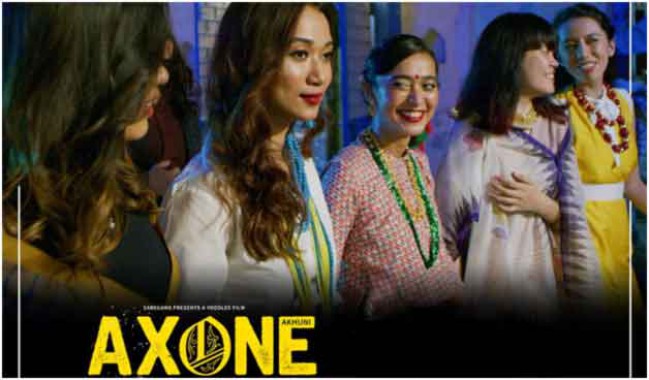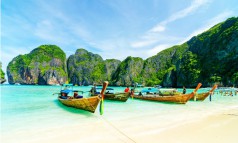




















Tuesday, Jun 30, 2020 13:15 [IST]
Last Update: Tuesday, Jun 30, 2020 07:39 [IST]
PRESCILLATAMANG
The movie Axone, released 12th June 2020 on Netflix was a movie much anticipated by the Northeastern population of India. With hardly any representation in mainstream Bollywood, a film with an all Northeastern Indian cast was something that most of us had high hopes for. The director, Nicholas Kharkongor, does a good job in highlighting the hubs of the North-Eastern Indian population and the racism they face on a daily basis. It's a simple story that weaves itself through a timeline of a single day - perhaps a way to show the depth of the problem that exists in mainland India. Though Axone was mostly praised and well-received by social media, my personal opinion is that this was because not everyone knew about the problematic undertones of this movie except mostly the North-East Indian population. ‘Axone’ the much-awaited movie which had stimulated the interest of many nation-wide falls short on high expectations.
As soon as I completed watching the movie I wasn't sure what baffled me more: the number of lazy assumptions about the Indian- Nepali speaking community or misrepresentation of one's race and food habits which was just plain ignorant. I believe that the movie deserves plaudits for including Nepalis and our own trivialized marginalisation and struggles both at the hands of North East and Mainland and addresses casual racism and the causes of alienation. There are a lot of things that didn't sit well with me and its negligence on our part will underpin such erroneous misrepresentation as part of our already existing complex nature of identity and culture.
The first misconception I would like to address is that UpasanaRai(Nepali protagonist) mentions that Nepalis don't cook Axone. One question that arises here is that if they deliberately mentioned that Nepalis don't cook it then why wasUpasanaso keen on cooking it? The portrayal was extremely displeasing and piquing, wasn't there another way to subtly portray Nepalis as trying too hard to fit in the North East crowd.
Axone, known as ‘Kinema’ is an ethnic food of the Kirat community, mainly Limbus and Rais and in fact, these communities have a centuries-old tradition of its fermentation. Ironically the most amusing part was a ‘Rai’ character incorrectly stating thatNepalis don't cook it. So this movie literally ridiculed and discredited centuries-old food culture of the Nepali and peculiarly Kirat Community.
Moving forward with the biggest blunder that this movie committed was casting a non-Mongolian looking actress to play the character of a woman whose ethnicity is ‘Rai’.I personally feel that a movie which is only just about two hours long can't carry the burden of pondering deep into the complexities of race and identity because ‘North-East’, as opposed to the mainland imagination of being a singular category is a homeland to a large number of culturally diverse tribes and ethnic groups. However, the character of UpasanaRai leaves distasteful evidence of how little research has been done at the filmmaker’s part to explain a Nepali character.
The nature of identity politics of Nepali community is complex be it in the country of origin i.e Nepal or in the case of Indian- Nepali speaking community in Sikkim or Darjeeling and Kalimpong districts of West Bengal or moreover sparsely scattered Nepali communities Nationwide. I'll now address why choosing ‘Rai’ as a typical Nepali girl was inappropriate to showcase Nepalis in general. I can only provide a brief outline on the subject of race which is as intricate as it is vast in the case of Nepali community. There are distinct groups of Nepalis -
i) The Khasas: Indo- Iranian type -Chettri and Bauns with 100s and more of surnames under them who are migrants from India, who formed the Nepali nation-state and introduced the Nepali language
ii) Janatis: Sino-Tibeto- Burmanese type- they are Sherpas and Tamang who migrated from parts of Tibet ,Rais and Limbus who are more Sinic whose ancestry and migration is linked to China , Gurungs and Mangars are a mix of Burmese and Tibetid people. Each tribe has its own distinct culture and language
iii) Mixed: Newars and Tharu. Newars are a mix of Indo-Iranian and Sino-Tibetan people whereas Tharus are a mix of Tibeto-Burmese and tribal people of North Indian plains.
In case of Nepalese from Nepal, they equate their nationality to citizenship rates than ethnicity and in case of Indian-Nepalis, it's just the linguistics that identifies them as ‘Nepalis/Gorkhas’ because they speak in Nepali despite belonging from different caste or Ethnic groups. The background of ethnicity is narrated here to highlight that ‘Rais’ belong to the Mongolian Race and are one of the most Mongolian looking ethnic groups in the Nepali community. So what were the makers thinking while casting a non-Mongolian looking actress to portray a character of Mongolian race?
Sayani Gupta surely wasn't an exemplary person to be casted as a Rai character given that it is a mongoloid race which beholds physical traits like small eyes, small nose and round faces. Although her features are very much close to that of KhasNepalis of Aryan origin but that again does not justify that the makers miserably failed to distinguish between the Mongolian Nepalis and Nepalis of Aryan origin. The fallacious portrayal and misrepresentation of certain communities' race on the differing side based on their appearance was highly inaccurate and misleading and has disgraced the Rai community.
It is also to be reiterated that when the film prescribes a notion of Nepalis not looking like a person from the ‘North-East’ – it leads to the conclusion that Nepalis aren't subjected to the same racial experiences and discrimination. It erases the history of violence against the Nepalis when they have been one of the most vulnerable communities to get racialised in mainland India.
Please don’t misunderstand me, I have nothing against Bengalis and this is also not to instil and instigate hate against Bengali community but given the power relations between the mentioned communities, the casting of a Bengali actress as a Nepali has hurt the sentiments of many Indian-Gorkhas. This takes us back to understand the century-old identity struggle for Gorkhaland against which the Bengali Bhadraloks have time and again asserted power over our fellow Nepalis. The imposition of Bengali language on non-Bengali speaking communities in West Bengal can be cited as one of the recent examples of the power monologue.
Meanwhile, one needs to understand the different pattern of migration that has already happened in the series of histories of the Northeast region.In the movie, Nepalis have been spoken of as “outsiders'' multiple times and to my understanding, the mention of ‘outsider’ is related to the anti-Nepali sentiments which had grown during the historic Assam Movement which was predominantly against Bangladeshi migrants but sooner Nepalis were also included in the anti-foreigner discourse. This sentiment soon extended to other North-Eastern states where it quickly turned into direct and violent attacks on Nepalis leading to Ethnic Cleansing. So I would like to question Axone that such anti-Nepali sentiments as ‘outsiders’ only exist against the Nepali migrants in the North East or even against the Nepalis residing in Sikkim and Hill Districts of West Bengal who have whatsoever nothing to do with their land. Looks like the makers carried along with them the Anti-Nepali sentiments in the movie as well and instead ended up generalising and reinforcing such sentiments towards all Nepalis.
The complete lack of relatable Nepali character which was further underscored by her laughably unrealistic, cringe-worthy Nepali accent and tone was extremely displeasing. Chanbi and Minam were such strong and impressive characters where on one hand Minam cracks Civil Service exam and on the other hand, Chanbi is a diligent and career-oriented woman. The character of Upasana is projected as naive and simple, only waiting for a man to come and marry her.Dear makers of Axone, Nepali women belong in the same category of empowerment. This is very similar to how Nepali characters in Hindi Cinema have historically been typecast as either a ‘Darwan’ or a victim of trafficking. Axone betrays a decent portrayal of a Nepali character even when Upasana centres the maximum screen presence throughout the film. Also contrary to the movie's depiction, most Nepalis living in the cities speak English quite eloquently without the distasteful accent. Though most of the Nepali speaking community are the first generation learner especially in higher education and they are equally doing well, even though it might be tough for them. However, the movie has failed to showcase the good part and kept them docile while depicting the character of UpasanaRai in the larger discourse of Northeast people.
Axone certainly is an eye-opener into the world of racial discrimination and prejudice that people from the North-East are constantly subjected to in metropolitan areas. I believe that this movie is a stepping stone to encourage acting talent cast from the North East and possibly widening of Bollywood to include and portray beyond North-India.
This article is based on purely subjective experience because everybody puts their own spin on the movie from their perspective and not everybody provokes the same emotions that the director had intended to. This article is not to denigrate the cast and makers of the movie but there was this need to rectify and clarify such misconceptions which if not corrected might engender new forms of social stigmatisation, generalisation and stereotypes against Nepali community.
Email: prescillatmoktan@gmail.com
